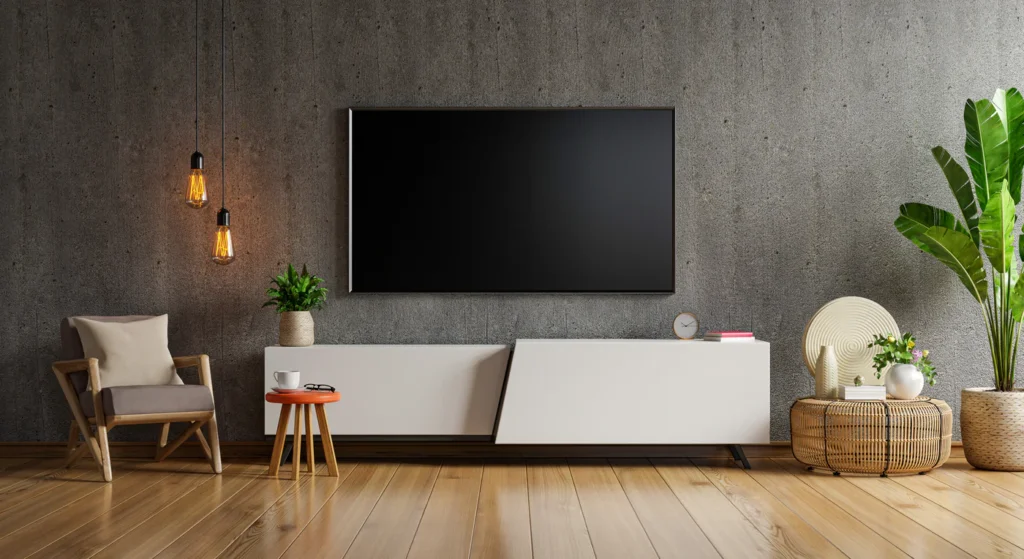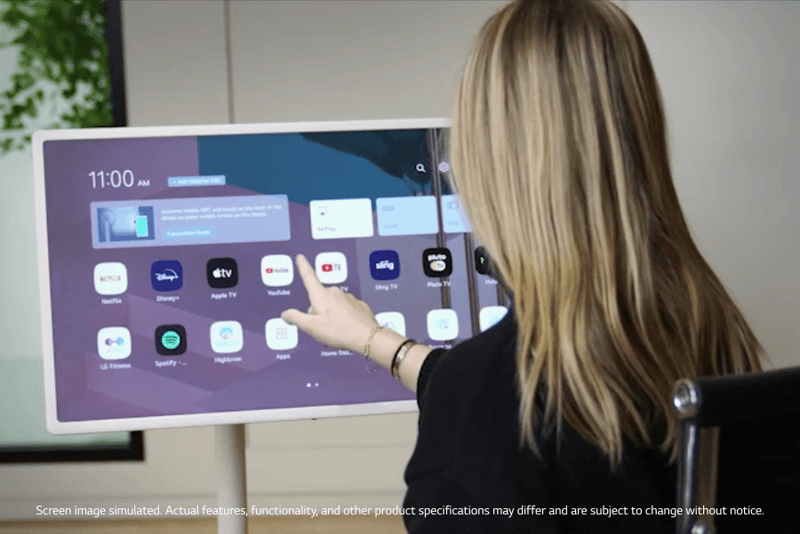In today’s tech-driven world, portability and adaptability are key to creating an efficient workspace. The question of whether to invest in a portable monitor on wheels or a traditional monitor stand often arises, especially for professionals who prioritize flexibility and convenience. Both options have their merits, but understanding the differences between them can help you make the best decision for your needs. In this article, we will explore the advantages and disadvantages of each, focusing on the specific benefits that a portable monitor on wheels can offer over the traditional stand setup.
What is a Portable Monitor on Wheels?
A portable monitor on wheels is exactly what it sounds like—a display screen mounted on a rolling stand, allowing it to be moved effortlessly from one location to another. This solution is particularly popular in dynamic environments such as offices, hospitals, schools, and even home offices where mobility is key. The ability to reposition the monitor quickly without needing to dismantle or adjust it manually provides a level of flexibility that traditional monitor stands can’t match.

What is a Traditional Monitor Stand?
A traditional monitor stand is a static setup that keeps the screen in one place, either on a desk or mounted to a wall. Traditional stands offer solid support and stability, often with features like adjustable height, tilt, or swivel to customize the viewing experience. However, these adjustments are typically limited to the monitor’s position relative to a single workspace.

Key Differences Between Portable Monitors on Wheels and Traditional Stands
1. Mobility and Flexibility
The most obvious difference between a portable monitor on wheels and a traditional stand is mobility. With wheels attached to the base of the stand, you can easily roll the monitor from one room to another without much effort. This is especially useful in collaborative office environments where teams frequently move between conference rooms, or in medical settings where the monitor needs to be brought directly to the patient’s side.
In contrast, traditional monitor stands are fixed in one location. While they offer stability, they lack the ability to be repositioned quickly. If you work in a single, dedicated space, this may not be an issue, but for those who value movement and adaptability, a portable monitor on wheels provides a significant advantage.
2. Ease of Setup
A portable monitor on wheels is designed for quick and easy setup. Most models are adjustable and come with universal mounting options that allow you to attach your monitor securely within minutes. Additionally, many of these stands feature cable management systems, ensuring that cords are kept tidy and out of the way while you move the monitor around.
Traditional monitor stands, while generally easy to install, lack the flexibility of on-the-go adjustments. Once the monitor is set up, making changes to its position typically requires manual effort, and in the case of a wall-mounted monitor, repositioning can be quite labor-intensive.
3. Ergonomics
Both portable monitors on wheels and traditional stands offer ergonomic benefits, but in different ways. With a traditional monitor stand, you can adjust the height, angle, and sometimes even the orientation (landscape to portrait) of the screen. This can help reduce strain on your neck and eyes, making it an excellent option for people who spend long hours at their desk.
Portable monitors on wheels, however, take ergonomics a step further by allowing you to adjust the screen to the perfect viewing height and angle in any room. You’re no longer limited to a desk setup. Whether you’re sitting, standing, or presenting to a group, you can position the monitor in a way that suits the environment. This is particularly useful in shared workspaces or classrooms where multiple people may need to view the screen at different angles.

4. Space Efficiency
In small offices or home workspaces, space is often at a premium. A portable monitor on wheels can help maximize your available space by providing a movable display that can be stored in a corner when not in use. When you need it, simply roll it into place. This versatility can help free up desk space, making your working environment feel less cluttered.
Traditional monitor stands, on the other hand, occupy a permanent spot on your desk or wall. While they may offer some adjustability, they are fixed in place, which can limit how much space you have for other office essentials.
5. Cost Considerations
When it comes to price, traditional monitor stands are generally more affordable than their wheeled counterparts. If budget is your primary concern and you don’t need the added flexibility, a traditional stand may be the better option for you. However, it’s important to consider the long-term value that a portable monitor on wheels can offer.
In dynamic environments where the ability to move the monitor frequently is critical, the cost of a portable monitor on wheels is justified by the added convenience and adaptability. For example, in a medical or educational setting, the ability to move the monitor quickly from one location to another can save valuable time and improve workflow efficiency.
6. Versatility of Use
A portable monitor on wheels is highly versatile. It can be used in a variety of settings—from office presentations to gaming, medical imaging, or even as a digital display in trade shows and events. The rolling base allows it to adapt to different environments without needing multiple screens. This versatility makes it an attractive option for professionals who need their technology to keep up with a fast-paced, ever-changing workflow.
Traditional monitor stands, while versatile in their own way, are primarily designed for desk setups. They are perfect for static workstations where mobility isn’t a priority, but they lack the adaptability that wheeled monitors provide.

Which is Better for You?
When deciding between a portable monitor on wheels and a traditional monitor stand, the choice largely depends on your specific needs.
- If you require flexibility, mobility, and the ability to move your screen between different locations, a portable monitor on wheels is the ideal solution. It’s perfect for environments like offices, classrooms, hospitals, and even trade shows where mobility and adaptability are key.
- If you work in a fixed location and prioritize stability and cost, then a traditional monitor stand will likely serve you better. It offers solid support and ergonomic adjustments, making it a great option for single-desk setups or home offices.
Conclusion
In the debate between a portable monitor on wheels and a traditional monitor stand, the answer ultimately comes down to your individual workspace needs. Both options have their strengths, but the flexibility and adaptability of a portable monitor on wheels make it an invaluable tool for those who need more than just a static display. Whether you’re presenting to a group, working in a shared office, or need the ability to move quickly between spaces, a portable monitor on wheels can greatly enhance your productivity and comfort.





